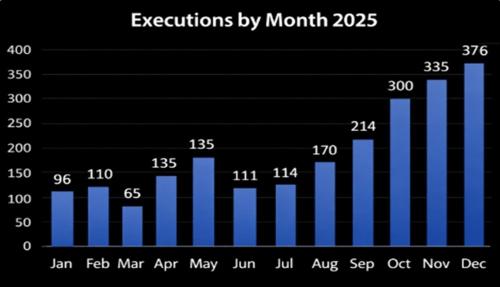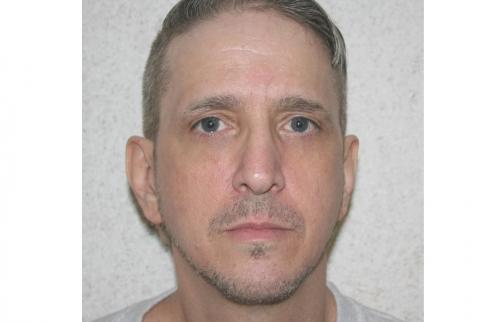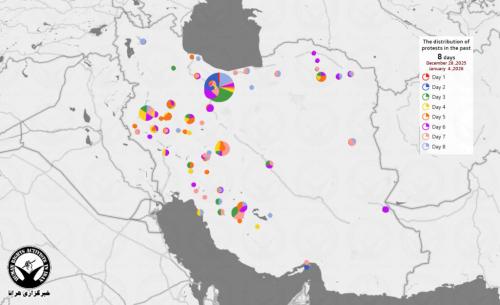12 January 2017 :
A Journey Inside the Prisons of Witches and Shamans
By Elisabetta Zamparutti
The streets of Bangui are like the spots of a leopard, with black patches of receding asphalt and big holes full of red African soil that, as time has passed, have taken over.
We are in Central Africa, in the poorest and sickest heart of the continent. The geographical and symbolic centre of such a land rich in nature, but impoverished by a century of colonial exploitation, followed by famine and war.
The road leading to Bimbo, a popular neighbourhood in the suburbs of Bangui, is crowded with people apparently busy with thousands of activities. The cabins made of wood and metals are poor homes and shops for hard-to-come-by agricultural products. There are young women with their babies wrapped on their shoulders and, perfectly balanced on their heads, their little portable stores: they sell fruits, vegetables, bread, and haberdashery. There are kids carrying around huge tree branches on little precarious carts, they are so well balanced that the carts do not seem to suffer the load.
The women’s prison is in the heart of Bimbo and stands in full contrast with the quality of life around it. It is one of the few brick buildings in the neighbourhood; it hosts 31 women with health assistance and a literacy course. They are taught to make soap that is used for daily necessities and that will assure a small profit when they are freed. “We are not entirely deprived of our rights… only the right to go out and come back is controlled, I would not be incarcerated otherwise,” said a prisoner. The inmates are housed in three different large rooms, according to the crime they have allegedly committed, and the crime also depends on their social status. The first room is assigned to women imprisoned for crimes against the public administration and it is the most dignified, “furnished” as it is with mattresses, sheets, pillows and mosquito nets. The six women hosted there wear traditional dresses and coloured veils; they even have three baby girls whom they can take care of until the age of five.
The most crowded room is for the “witches”, fourteen women dressed more modestly. We meet with them outdoors, under a canopy that serves also as a kitchen. They have been imprisoned for a “crime” that not even the penal code can define. A crime punished by the death penalty until a few years ago. Nowadays, the punishment for witchcraft ranges from 5 to 10 years; outside the prison, though, the sentence can be much more severe.
During the last two and a half years, more than 500 people have been suspected of practicing witchcraft. They have been victims of private justice, not just in the most remote villages of the forest, but also in the neighbourhoods of Bangui. There, the ancient beliefs are still alive and it is really dangerous to publically debate magic, charms, amulets and other occult practices.
In the Central African Magazine of Anthropology, the anthropologist Emile Ndiapou wrote: “In Central Africa, a witch is a person who has two stomachs, one to digest food and the other to host some animals: an owl, a cat, a frog, a rooster, even a snake. Living in the stomach of a magician is most of the time an animal that emits sounds. You can understand why a cat’s meow, an owl’s hoots, a frog’s croak are scary during the night: they announce the passage or the arrival of a wizard who is going to hurt someone in the house or in the neighbourhood.”
The police often arrive too late to save alleged “witches” or “wizards” accused of “suspicious deaths” from crude vigilante justice.
On 15 August 2012, a man in his sixties, accused of having strangled a girl, was stoned and burned in Danga, in Grimari’s sub-prefecture. His home and the house of his alleged accomplice were set on fire. The other man, who was not killed, is still in Bambari’s prison. After burning down the two homes, protesters destroyed some banana and manioc’s fields, and a fish farm, because the victim was also a farmer.
On 19 September, two women suspected of being witches were killed, burned and buried in a common grave in the village of Kapou, 60 km away from Bangui.
On 10 October, a sixty year old woman, believed by Botoko’s inhabitants to have transmitted witchcraft to a girl, was obliged to stay at the girl’s bedside until her recovery. If she had refused, she would have been killed. Luckily the woman was saved and is currently protected by a prelate to escape the villagers’ “justice”.
The “legal” death penalty for witchcraft was abolished in 2010 but I came here to the Central African Republic, with Marco Perduca and Sergio D’Elia, to demand its full abolition, after more than a 30-year-long de facto moratorium. A week before our arrival, the government presented a draft for abolition, now waiting for parliamentary scrutiny. As we meet, PM Faustin-Archange Touadera assures us of the favourable vote of the Central African Republic on the pro-moratorium Resolution at the UN headquarters in New York. Moreover, he confirms the ratification of the Second Optional Protocol of the International Covenant on Civil and Political Rights, aiming at the abolition of the death penalty.
We continue our journey in Ngaragba’s men’s prison, in the administrative and residential centre of Bangui. We arrive during lunch, the smell is unbearable and the air is un-breathable. The inmates are waiting holding their bowls in a straight line in front of two big pots of corn meal and tapioca leaves, just cooked in an outdoor wood kitchen. There is not enough food for all and the prisoners rely on the good-hearted rationing guy, a cheerful Chinese man detained for the murder of a co-national. There is only one meal a day, not everybody can rely on the food brought in by the families and eventually cooked on small fires set in the courtyard of the section.
Like the other 37 prisons of the country, Ngaragba’s was built during the colonial era and in over a half century has not been subjected to a serious maintenance intervention nor even a re-painting.
It is composed of five sections and here too, as in Bimbo, theoretically divided by crimes committed but, in reality, by social status. The sections are not numbered; a name instead identifies each one and a symbol further helps the identification. Ironically, the first one is named “The White House”, as the US presidential residence: a maximum security section where the richest convicts are imprisoned, as it seems from the clean clothes that they wear, the Persian rags, the beds raised from the floor and protected from mosquitoes where they sleep. The second section is called “Golo-Waka”; it hosts chicken-thieves and hashish smokers, as clearly advertised by the drawing of a Rastafarian smoking a joint on the section’s gate. The third section’s name is “D.D.P.”; it is dedicated to the imprisonment for military crimes or those against the public administration. Its door is shuttered: we don’t ask if the reason for this is the lack of convicts or rather their safety. The fourth section is named “Couloir” and the symbol of a broom-riding witch leaves no doubt to the fact that there we will find alleged wizards, unsuccessful healers and charlatans of any kind. It is the most crumbling prison section I have ever seen in my entire life. Except for a few of them, the prisoners wear dirty and ruined clothes and sleep on the floor; the prison cells are the darkest of the whole prison; the W.C. is a small hovel, full with filth and with neither water or a real toilet. On the inner wall somebody – not a prisoner, for sure – has written in blue “Jesus saves you” and sketched the scene of a guard beating the soles of an inmate’s feet with a stick. The disturbing caption says: “five well-aimed shots.”
Finally, in the last section, named “Iraq” and advertised by a skull on the entrance, there are prisoners convicted for blood crimes.
Here, at the limits of human dignity, 328 prisoners are languishing, 228 waiting for a trail; many of them have been waiting months to appear before a judge, few of them have a lawyer. Those with infectious diseases, as scabies and malaria, are not kept separated from other detainees. There is only a nurse caring for the ones in need, basically almost all of them, counting only on a bed, a scale, a pair of scissors, a roll of patches and two flacons of disinfectant.
The prison’s security is assigned to 20 army soldiers, some of them living inside the building while the others sleep in tents out of the facility.
The overpopulation problem was only partially solved on 2 August 2012, when protesters assaulted the building and freed all the 552 inmates then imprisoned. In July, the government issued a call for recruitment to the Army which received more than 10,000 applications. After announcing that only 650 applicants had been selected, as it was specified in the call, thousands of young citizens took to the streets, burning tires and shouting against injustice. After destroying president’s François Bozizé statue, erected among the five former Heads of the State in the park celebrating the 50th anniversary of independence, they moved towards the prisons, they broke through the gate and opened up all the cells. Among the 552 escaped detainees, 76 decided to go back to Ngaragba after a few days. Among those, some were already convicted, as for example soldiers and high officials of the Army, while some others are still waiting for a trial, like Francisco Wilibona. “I came back because since when I have been arrested in 2010 I have not been appeared before a judge. I want to understand why they put me in prison.”
“The detainees that decided to come back on their own showed a good civic sense,” commented Léonard Mbélé, Ngaragba prison’s superintendent, during our visit.
After about a month, more than 300 prisoners that escaped have voluntarily come back to Ngaragba prison, despite the well known living hell waiting for them. Beyond the death penalty, that is de facto no longer used in the Central African Republic and will soon be abolished by law, the Government and the International Community have the duty to avoid that the execution of a sentence becomes in fact a death sentence. They also have the duty to put an end to witch-hunting and the degrading conditions of the national prisons.
October 2012








